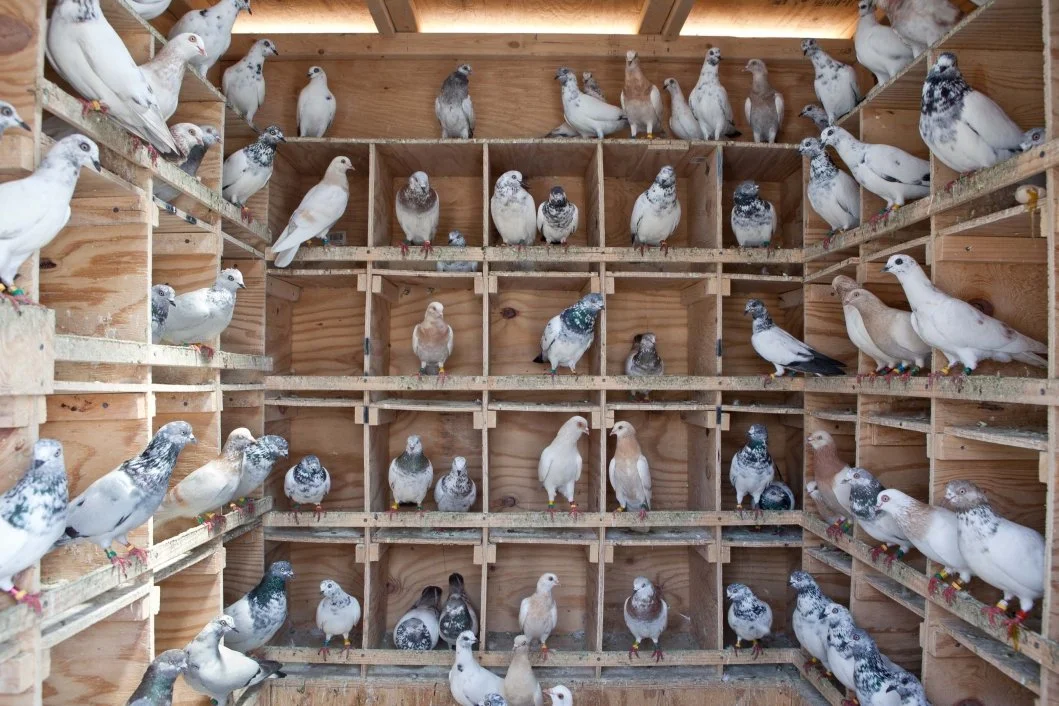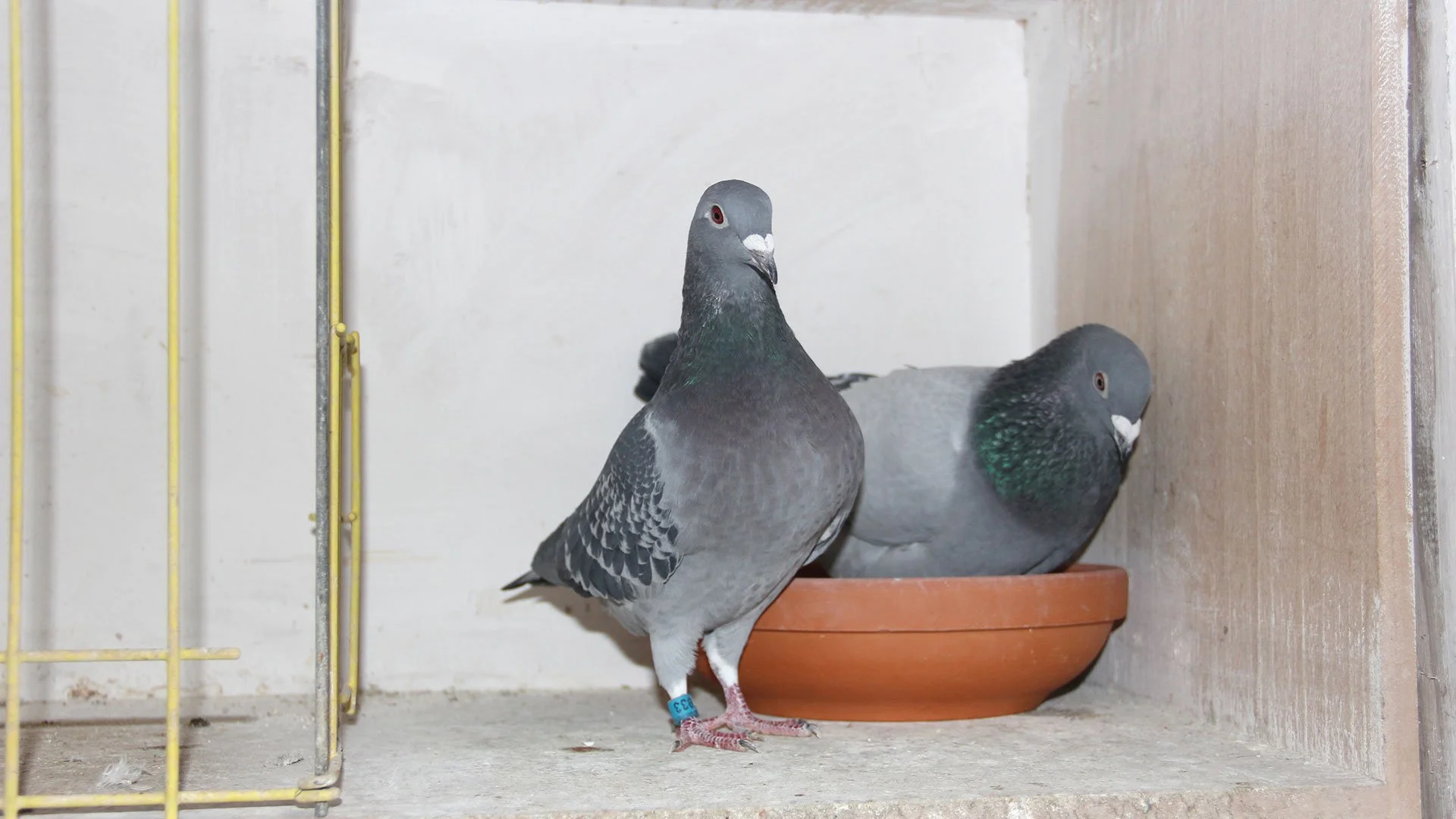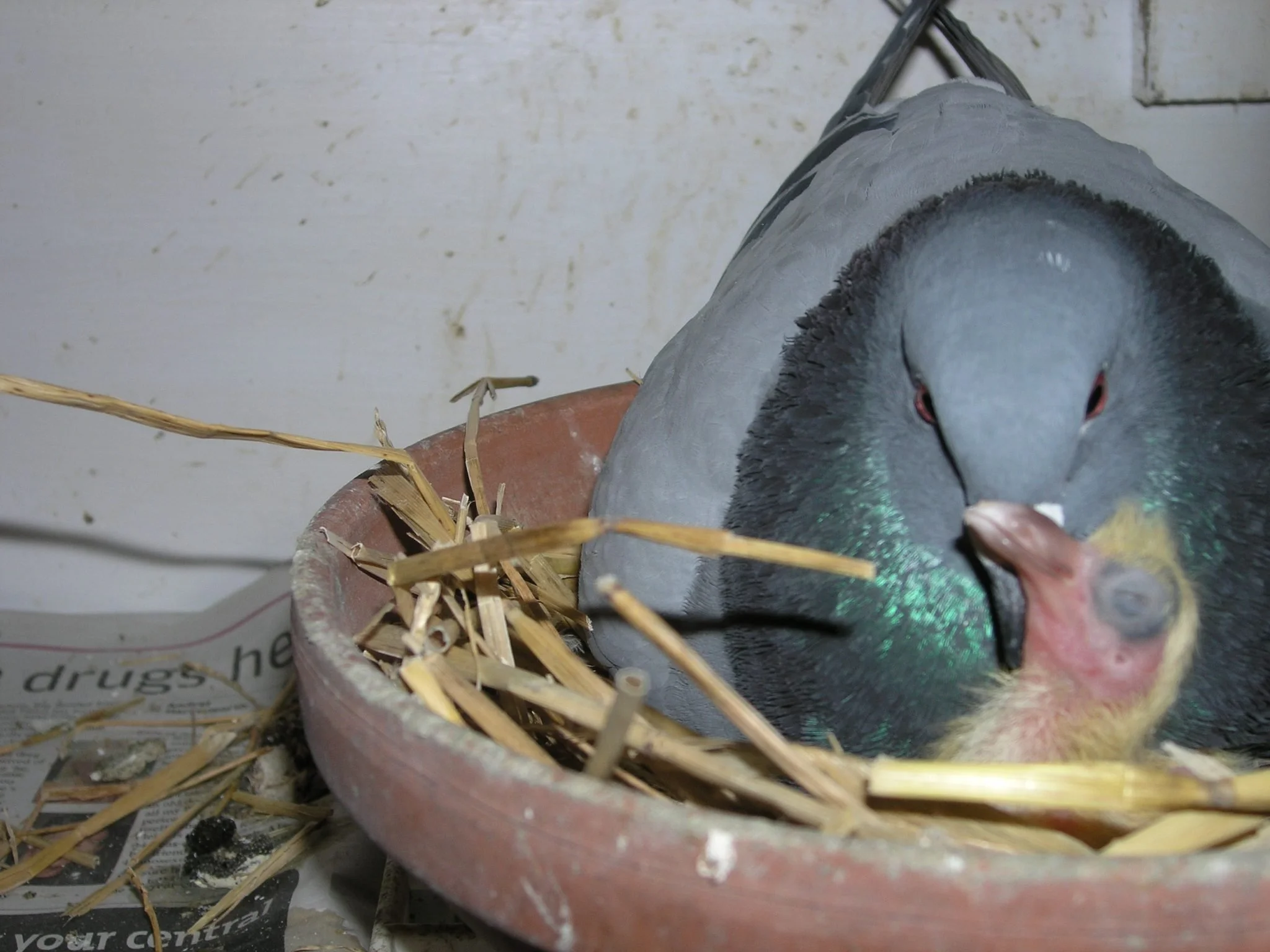From Coops to Cuisine: A Comprehensive Guide on Raising Pigeons for Meat
Discover > Poultry for Your Homestead > From Coops to Cuisine: A Comprehensive Guide on Raising Pigeons for Meat
If you're looking to raise your source of fresh, lean meat, raising pigeons can be a rewarding and sustainable option. Pigeon meat is highly nutritious, low in fat, and has a unique flavor that is often compared to chicken or rabbit. In this comprehensive guide, we'll walk you through the steps of raising pigeons for meat, from setting up your coop to processing the birds for consumption.
For pigeon fanciers, creating the perfect pigeon loft is a crucial first step in your journey to raise pigeons successfully. This specialized environment provides a safe and comfortable space for your young pigeons to grow and thrive. We'll explore the ins and outs of setting up a pigeon loft that meets the needs of your young pigeon.
Whether you're a seasoned pigeon fancier or just starting, this guide is your go-to resource for raising and keeping pigeons. We'll cover everything from setting up pigeon lofts and nest boxes to nurturing young birds and understanding the intricacies of racing pigeons. Get ready to dive into the world of domestic pigeons and learn how to raise these remarkable birds, from coops to cuisine, with a focus on the care, breeding, and utilization of pigeons for meat production.
Setting Up the Coop
Setting up a suitable coop is essential for successfully raising pigeons for meat. In this section, we will explore the key aspects of setting up a coop, including choosing the right location, designing the coop, and creating comfortable bedding and nesting areas.
Choosing the Right Location
When setting up a pigeon coop, choosing the right location is crucial for the well-being of the birds. Keep in mind the following factors when selecting a location:
Ventilation. The coop should have good airflow to prevent moisture, ammonia, and foul odors from building up. Proper ventilation helps maintain a healthy environment for the pigeons and reduces the risk of respiratory issues.
Protection from Extreme Weather. Position the coop in an area that protects from harsh weather conditions such as strong winds, excessive sunlight, or heavy rainfall. Consider using natural windbreaks or installing shade structures to shield the pigeons from extreme temperatures.
Accessibility for Cleaning and Maintenance. Select a location that allows easy access for cleaning and maintenance tasks. This includes being able to reach all areas of the coop for regular cleaning, checking on the pigeons, and providing food and water.
Quiet and Disturbance-Free. Pigeons are sensitive birds, and excessive noise and disturbances can stress them out. Choose a location away from busy roads, loud machinery, or other sources of noise to promote a calm and stress-free environment.
Designing the Coop
Designing an appropriate coop is essential to meet the needs of your pigeons. Consider the following aspects when designing the coop:
Coop Size and Structure. The size of the coop will depend on the number of pigeons you plan to raise. Allow enough space for the birds to move around comfortably. A general guideline is to provide at least 2 square feet of floor space per pigeon. The coop should be sturdy and predator-proof, with a secure door to keep the pigeons safe.
Ventilation and Lighting. Proper ventilation is a requisite to maintain good air quality inside the coop. Install wire mesh walls or windows to allow for airflow while keeping predators out. The pigeons' natural behaviors will flourish if you mimic the day-and-night cycle by using either natural or artificial illumination.
Perches and Roosting Space. Pigeons require perches to rest and roost. Install horizontal perches at various heights to accommodate the birds' preferences. Provide enough perching space for all pigeons to avoid overcrowding and potential conflicts.
Nesting Boxes. Create separate nesting areas where the pigeons can lay their eggs. These areas should be dark, secluded, and comfortable. Use nesting boxes with suitable dimensions to provide privacy and encourage natural nesting behaviors. Pigeons prefer raised platforms or shelves as nesting sites.
Bedding and Nesting Areas
To maintain a clean and comfortable environment for your pigeons, pay attention to bedding and nesting areas:
Bedding Material. Use clean straw or wood shavings as bedding material. These materials provide insulation, absorb moisture, and help control odors. Regularly replace soiled or damp bedding to maintain cleanliness and prevent the growth of bacteria.
Nesting Boxes. Create separate nesting areas within the coop. Pigeons prefer dark and secluded spaces for nesting. Use nesting boxes with suitable dimensions to accommodate the pigeons comfortably. These boxes should be easily accessible for checking and collecting eggs.
Egg Collection. Regularly check the nesting boxes for eggs. Pigeons typically lay two eggs at a time, and they may lay eggs every few weeks. Collect the eggs promptly to prevent them from being damaged or accidentally crushed by the pigeons.
Choosing and Caring for Pigeons
Selecting healthy pigeons and providing them with proper care is vital for their growth and overall well-being. This section will guide you through the process of selecting healthy pigeons, feeding them a balanced diet, and ensuring their health through regular check-ups and disease prevention measures.
Selecting Healthy Pigeons
Selecting healthy pigeons is the foundation of a successful meat-raising venture. Take into account the following points when choosing your pigeons:
Source of Pigeons. Obtain pigeons from a reputable source, such as a reliable breeder or a trusted pigeon association. This ascertains that the birds come from a healthy and disease-free environment.
Physical Indicators. Look for pigeons that are active, alert, and demonstrate a good overall appearance. Healthy pigeons have bright and clear eyes, smooth feathers, and a well-groomed appearance. Avoid birds that show signs of illness or injury, such as discolored or ruffled feathers, discharge from the eyes or nostrils, or limping.
Breeds for Meat Production. It is advisable to choose pigeons that are known to produce quality meat. The King, Carneau, or Homing pigeons are popular choices for their meat quality and growth rate.
Feeding and Watering
Proper nutrition is pivotal for the well-being and growth of your pigeons. Pay attention to the following aspects of feeding and watering:
Balanced Diet. Provide your pigeons with a balanced diet to meet their nutritional needs. High-quality pigeon feed, specifically formulated for their dietary requirements, should constitute the primary component of their diet. You can find pigeon feed at local feed stores or online. It typically contains a combination of grains, seeds, and necessary vitamins and minerals.
Fresh Water. Ensure your pigeons have access to clean and fresh water at all times. Pigeons have high water requirements, especially during hot weather or when feeding on dry feed. Regularly clean and refill their water containers to prevent contamination.
Supplements. Supplements may help maintain the health of your pigeons. Grit, such as crushed stones or shells, aids in digestion by grinding food in the bird's gizzard. Oyster shells provide calcium, which is essential for strong eggshells and overall skeletal health.
Health Care and Disease Prevention
Maintaining the health of your pigeons is crucial for their overall well-being. Here are some key points to regard:
Regular Health Checks. Monitor your pigeons' weight, feathers, and behavior regularly. Look for any changes that could indicate illness or discomfort. Early detection of health issues allows for prompt intervention.
Avian Veterinarian Consultation. Consult with an avian veterinarian for guidance on maintaining your pigeons' health. They can provide advice on vaccinations, parasite control, and treatment for common pigeon diseases. Regular check-ups with a specialist ascertain proper care and early detection of any health issues.
Clean and Hygienic Coop. Maintain a clean and hygienic coop environment to minimize the risk of disease transmission. Regularly clean the coop, including perches, nesting areas, and feeding/watering containers. Proper waste management and good ventilation contribute to a healthy living environment for your pigeons. By selecting healthy pigeons, providing them with a balanced diet, and implementing proper health care and disease prevention measures, you can secure the well-being and productivity of your pigeon flock.
Breeding and Reproduction
Breeding pigeons is a critical aspect of raising them for meat production. This section will guide you through the process of selecting breeding pairs, creating suitable nesting environments, and understanding the incubation and hatching process.
Breeding Pairs
Selecting suitable breeding pairs is essential for successful pigeon breeding. Think over the following points when choosing your breeding pairs:
Maturity. Wait until your pigeons reach the appropriate age for breeding, which is typically around 6 to 8 months old. Breeding pigeons too early can negatively impact their health and development.
Health and Vitality. Choose breeding pairs that are in good health, and free from any signs of illness or genetic abnormalities. See to it that they have vibrant feathers, clear eyes, and show active and alert behavior.
Size and Conformation. Regarding the size and conformation of the pigeons. Breeding pairs should be of similar size to ensure compatibility during mating and optimal breeding success. Look for pigeons that have good body conformation, as this can be an indicator of their ability to produce healthy offspring.
Meat-Producing Traits. Prioritize pigeons with desirable meat-producing traits, such as good muscle development and efficient feed conversion. Breeds like the King or Carneau pigeons are known for their meat quality and growth rate.
Nesting Boxes and Environment. Provide suitable nesting boxes within the coop for the breeding pairs. These boxes should be dark, secluded, and comfortable to mimic the pigeons' natural nesting behavior. Create an environment that encourages natural mating and provides privacy for the breeding pairs.
Incubation and Hatching
Understanding the incubation and hatching process is crucial for successful pigeon breeding. Consider the following aspects during this phase:
Incubation Period. Pigeons typically lay two eggs at a time, with an incubation period of approximately 18 days. Ensure that the nesting boxes are undisturbed and quiet during this period, as disturbances can lead to abandoned eggs.
Dark and Quiet Nesting Boxes
To simulate the natural nesting environment, make sure that the nesting boxes are dark and secluded. This provides a sense of security for the nesting pairs and encourages successful incubation.
Parental Care. Once the eggs hatch, the parent pigeons will care for the chicks. They will feed the hatchlings with crop milk, a highly nutritious substance they produce, for the first few days. As the chicks grow older, the parents will gradually introduce solid food to their diet.
Monitoring and Support. Monitor the nesting pairs during the incubation and hatching process, ensuring they have access to fresh water and suitable feed. Observe the chicks for any signs of distress or health issues, and intervene if necessary.
By selecting appropriate breeding pairs, providing suitable nesting environments, and understanding the incubation and hatching process, you can promote successful breeding and raise healthy pigeon offspring for meat production.
Processing and Consuming Pigeon Meat
Once your pigeons have reached the desired size and weight, it's time to harvest and process them for meat consumption. This section will guide humane slaughter methods, dressing and preparing the meat, and important food safety considerations.
Harvesting the Birds
Harvesting pigeons for meat requires a humane and respectful approach. Consider the following points when harvesting your birds:
Humane Slaughter Methods. Choose a humane method of slaughter to minimize stress and pain for the pigeons. Common methods include cervical dislocation or the use of a specialized poultry killing cone. Research and practice proper techniques to have a swift and humane process.
Hygiene and Sanitation. Follow strict hygiene and sanitation practices during the harvesting process to maintain food safety. Use clean and sanitized equipment, including knives and cutting surfaces. Minimize cross-contamination by avoiding contact between raw meat and other surfaces
Feather Removal. Remove the feathers from the pigeons after slaughter. This can be done through plucking or scalding methods. Plucking involves manually removing the feathers by hand, while scalding involves briefly immersing the bird in hot water to loosen the feathers for easier removal. Choose the method that suits your preferences and resources.
Gutting and Cleaning. After feather removal, gut the pigeons by making a small incision near the vent and carefully removing the internal organs. Clean the cavity thoroughly, ensuring that no traces of organs or debris remain. Rinse the birds with cold water to remove any remaining contaminants.
Dressing and Preparing the Meat
Processing Techniques. Once the pigeons are dressed, you can further process the meat if desired. This can include portioning the meat into specific cuts, such as breasts, thighs, and wings. Alternatively, you can leave the birds whole for different cooking methods.
Cooking Methods. Pigeon meat can be cooked using various methods, depending on your preferences. It can be roasted, grilled, pan-fried, or stewed. Experiment with different recipes and techniques to find the cooking method that suits your taste and desired flavor.
Flavor Pairings. Pigeon meat has a rich flavor that pairs well with aromatic herbs and spices. Consider using ingredients such as rosemary, thyme, garlic, or juniper berries (how long do juniper berries last?) to enhance the taste. Marinating the meat before cooking can also add depth of flavor.
Food Safety Considerations
Ensuring food safety is paramount when handling and consuming pigeon meat. Keep in mind the following safety measures:
Storage. Keep the pigeon meat refrigerated or frozen until you're ready to cook it. Store it in sealed containers or freezer bags to prevent contamination and maintain freshness. Follow proper storage guidelines and consume the meat within recommended time frames.
Thorough Cooking. Cook pigeon meat thoroughly to eliminate any potential pathogens. The internal temperature of the meat should reach 165°F (74°C) to ensure it is safe to eat. Use a meat thermometer to accurately gauge the temperature.
Cross-Contamination Prevention. Practice good hygiene during food preparation. Avoid cross-contamination by using separate cutting boards, utensils, and surfaces for raw and cooked meat. Wash your hands thoroughly before and after handling raw meat.
By following humane slaughter methods, properly dressing and preparing the meat, and adhering to food safety considerations, you can be sure that the pigeon meat you harvest is safe, flavorful, and enjoyable to consume.
Start Raising Pigeons Today!
Raising pigeons for meat can be a rewarding and sustainable endeavor. By following the steps outlined in this guide, you'll be well on your way to successfully raising, breeding, and processing pigeons for your consumption. So what are you waiting for? Start raising pigeons today and enjoy the unique flavor and benefits that pigeon meat has to offer!







